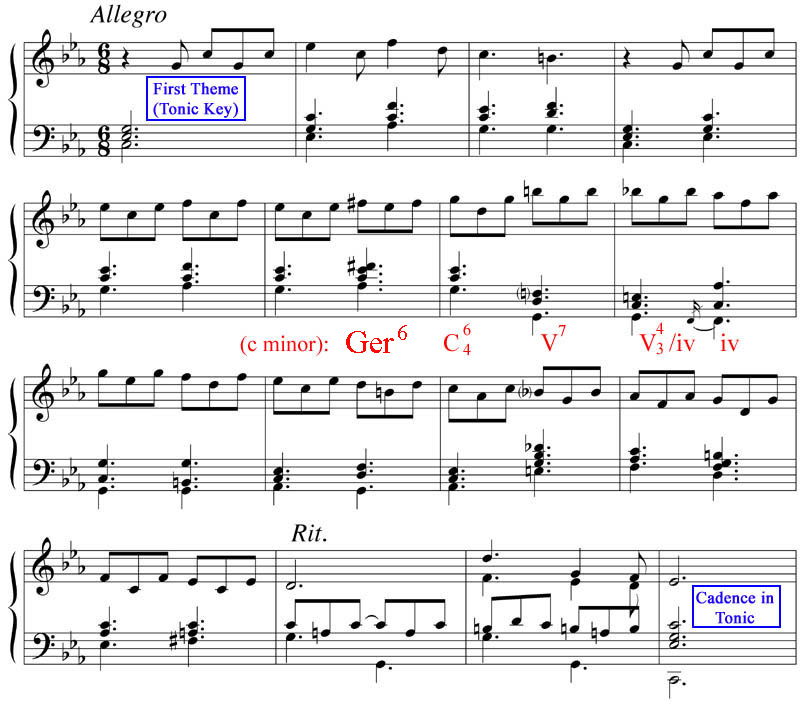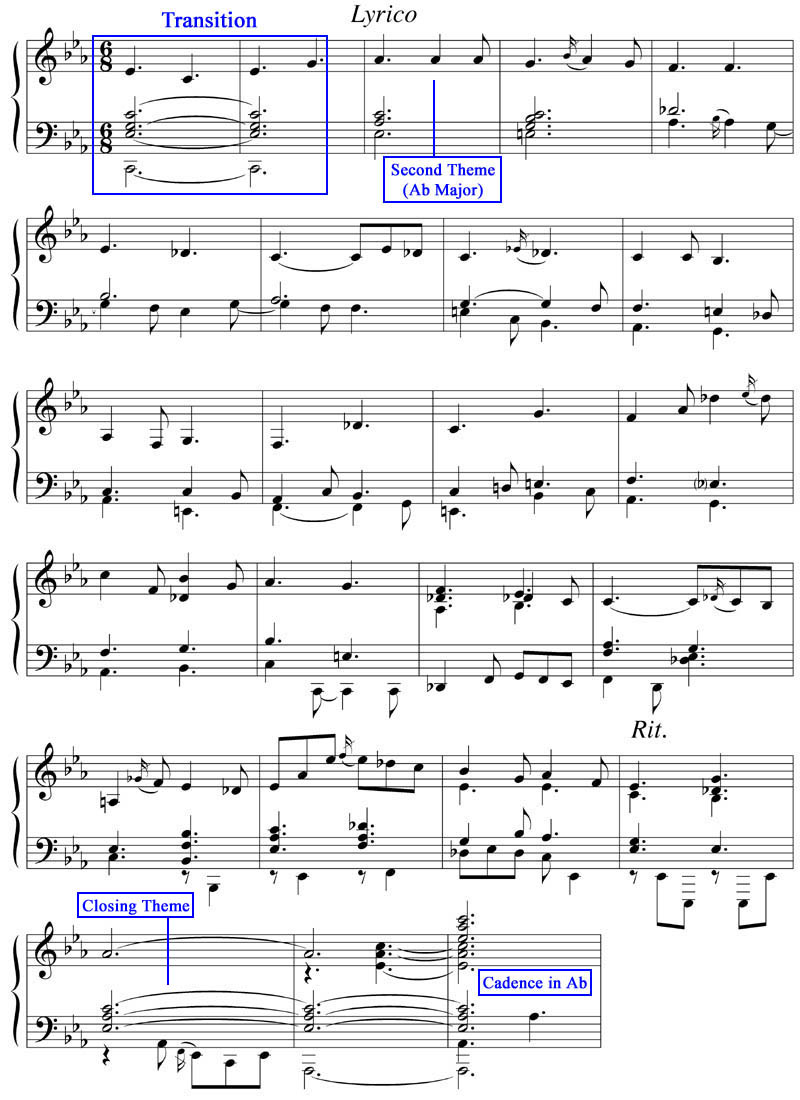1. First Theme. Many first 'themes' of sonatas are more textural in nature (rather than being overtly melodic) and driven by a distinct harmonic progression. Our sonata in c minor features a first theme characterized by a rhythmic motive supported by clear-cut block chords. Some interesting harmonic ideas are as well highlighted below.

2. Second Theme. A brief transition brings us to the second theme, here cast in Ab major. Although the typical Classical sonata in a minor key would feature a second theme in the relative major (which would inform us here to compose in Eb), as the form evolved throughout the 19th century more unexpected turns of harmony are observed while still keeping within the confines of the structural dictates. As well, we've allowed the bass to take on the responsibility of being the primary means of rhythmic propulsion while a more lyrical melody hovers above. A succinct closing theme brings the exposition to a close.

Continue to the next section on the sonata.


